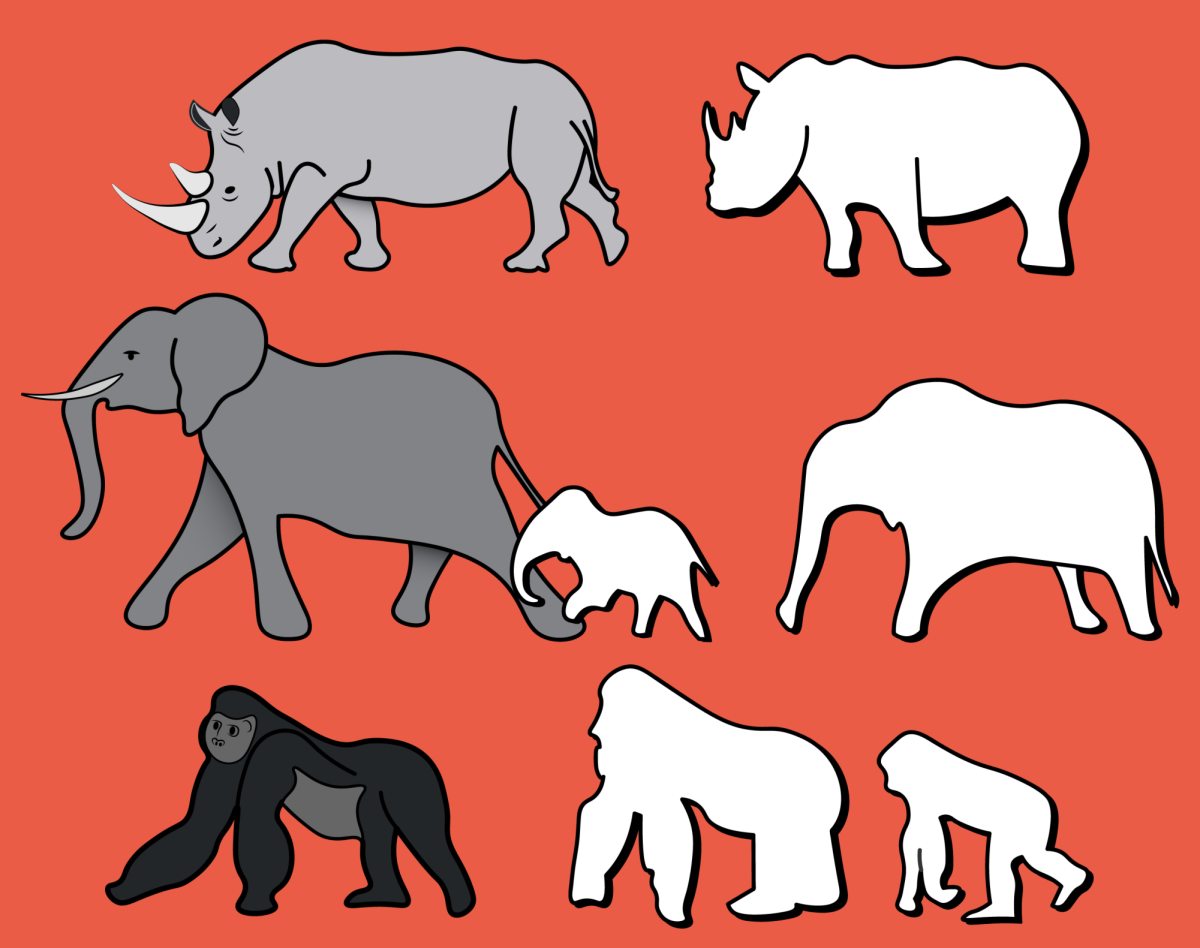As of 2023, approximately 44,000 species currently battle extinction, which is roughly 2,000 more than what was accounted for in 2022. Even though this is a shocking number, most people will go about their day, not thinking about the effect this number actually has on them. In reality, animals play a vital role in the global ecosystem, and without certain species, this ecosystem could collapse entirely.
This is a cause for concern because animals stabilize the food chain and even human health. Animal extinction is linked to the domino effect in the sense that all species are connected in the web of life. Animals rely on each other for food, survival and shelter. When one species becomes extinct, the chances of closely related species also becoming extinct increase.
A popular example of this phenomenon would be the elephant species. At least 20,000 elephants are killed each year in Africa for their tusks. African forest elephants have seen a 62% decline in population between 2002-11, and Savanna elephants have declined by 30% between 2007-14. Elephants are extremely important for the ecosystem as they provide food, water, shelter and control resource availability for other species.
Gorillas are another critically endangered species. One of Africa’s most endangered subspecies of gorillas is the Cross River gorilla. This species is one of the most endangered species in the world with only about 200 left. Gorillas are important to humans and the Earth in many ways.
Humans share up to 98% of their DNA with gorillas and are one of our closest relative animal species. They provide scientists with valuable insight into human evolutionary history. Gorillas are considered a keystone species in their ecosystems, and despite their population size, their impact on the environment speaks volumes.
A keystone species is a species that plays a critical role in maintaining the structure and function of an ecosystem. Therefore, if a keystone species is removed from an ecosystem, the entire ecosystem can be disrupted or even collapse. This is because keystone species have a disproportionate impact on their ecosystem, despite their often small population sizes.
Rhinos are another species critically endangered throughout the world, specifically black, Javan and Sumatran rhinos. By 1970, the rhino population significantly dropped to 70,000. As of now, approximately 27,000 remain in the wild. Very few of these remaining rhinos will survive in the wild because of consistent poaching and habitat loss.
Rhinos do a lot to maintain their ecosystems like maintaining the health of their habitat while creating ideal conditions for other herbivores. Rhinos are crucial grazers, meaning they shape the landscape by consuming large amounts of vegetation. Like gorillas, rhinos are also a keystone species impacting their entire habitat’s topography and influencing other plants and animals.
The risk of losing these critically endangered animals impacts humans a lot more than one would think. Endangered species play essential roles in maintaining the balance of their ecosystems and providing valuable resources for human populations. However, some argue extinction is a part of evolution, therefore extinction is not something humans should be concerned about.
Considering this, losing even a single species can have disastrous impacts on the rest of the ecosystem because the effects will be felt throughout the food chain.
Additionally, human impact is the number one cause of animal extinction. It is vital to preserve these species and do one’s part in saving the planet. Ways to work together to make a change include buying products from sustainable sources, advocating for conservation, supporting conservation groups, learning more about wildlife and educating others.


